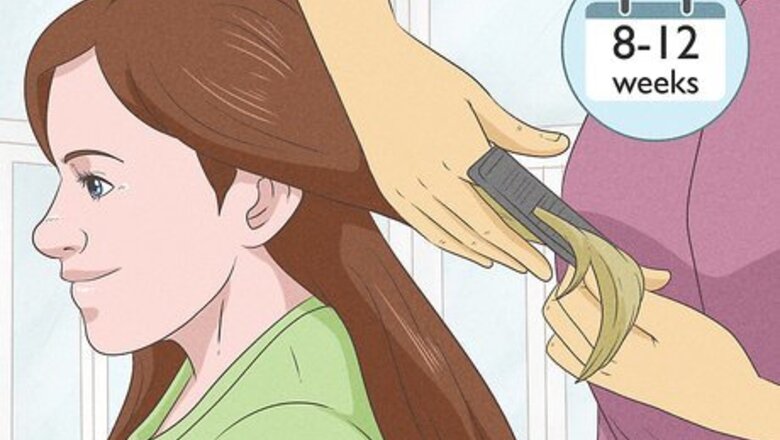
views
X
Research source
Regardless of your hair length and type, you can give yourself a simple trim to keep your hair healthy and looking great while you grow it out. If you have shoulder-length or long hair, you might like to try “dusting,” a simple method that helps get rid of split ends.
When and How Much to Trim
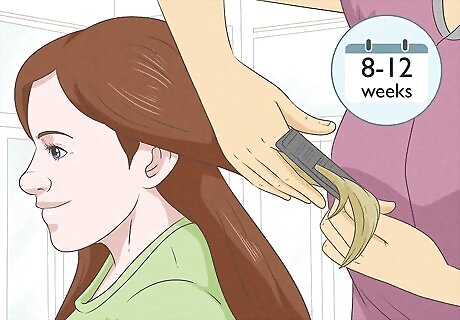
Get a haircut every 8-12 weeks to keep your hair healthy. You don’t need a dramatic haircut to keep your locks in great condition—regular maintenance can get the job done! Instead, give your hair frequent trims once every 2-3 months, which helps keep your hair in great condition. If your split ends are too severe, they can do a lot of damage further up the hair shaft. Curly hair tends to split more often than other kinds of hair. Men only need to get a haircut about 1-3 times each year.
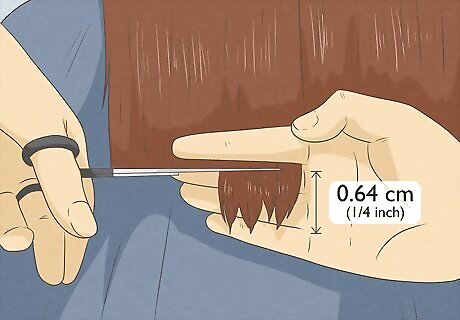
Trim away ⁄4 in (0.64 cm) to remove split ends. As you grow your hair out, you don’t need to worry about making any major cuts or trims. A small, ⁄4 in (0.64 cm) trim can go a long way in keeping your hair in great shape as it grows it out.
Cut only ⁄8 in (0.32 cm) off if you have super short hair. Growing out your hair can be tricky, especially if it’s really short (like a pixie cut). Don’t worry about making any major adjustments—simply trim a small margin off the ends of your hair to get rid of any fraying ends. If you don’t have a lot of experience cutting hair, don’t worry about trimming the back—instead, focus on the sections of hair you can see in the mirror. Since your hair is on the shorter side, you only need to trim your hair every 10-12 weeks. It won’t look like you’re making much of a difference, but you’re saving your hair from damage! If you’re growing out layered hair, trim the bottom of your hair so it stays short. Then, wait for the upper layers of hair to grow. If your hair is really short and you want to grow it out, try trimming it around your ears and at the back of your neck each time you get a haircut. That way, you can grow out the top into a bob, and it won't look so awkward.
Snip off ⁄2 in (1.3 cm) if you have natural hair. Grab 1 curl of your hair and trim a little bit off the bottom to get rid of any uneven ends. Don’t cut off too much—just ⁄2 in (1.3 cm) is enough. If you wear your hair curly, it’s best to cut it when it’s curly, too.
Cut curly hair one curl at a time. Pull up all your hair in a clip, leaving 1 small section dangling and free. Run a comb through this small section, and cut off ⁄4 in (0.64 cm) from the bottom. Repeat this process with the rest of your hair—simply clip everything back, and trim the ends off another small section. Work on your hair in 1 to 2 in (2.5 to 5.1 cm) sections, so your hair is a little easier to manage.
Make the back and sides of your hair a bit shorter than the top for men's styles. Keep the sides and back of your hair short and close to your scalp, while letting the top of your hair grow out comfortably. Once the top of your hair is at least 4 in (10 cm) long, let the sides and back of your hair start to grow out as well. This helps save you from any unwanted mullets or otherwise awkward hairdos! As your hair grows out, don’t tie it up in a top knot, which is pretty tough on your hair. Instead, keep it out of the way in a low bun or ponytail. Headbands are another easy and helpful way to keep your hair out of your face.
Trim your bangs vertically. Tie the rest of your hair back in a ponytail or hair clip, so you can give your bangs a little TLC. Don’t snip your bangs straight across—instead, hold your scissors vertically. Cut along the bottom of your bangs in tiny, vertical snips, creating a soft, balanced look. Keep trimming your bangs until they’re slightly below your eyebrows. This vertical cutting style is known as “point cutting.” It’s a great strategy if you don’t have a lot of hair-cutting experience since it gives you a bigger margin of error.
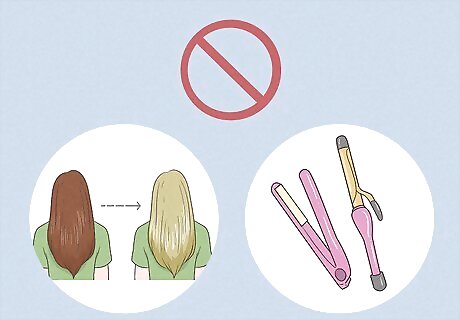
Prevent hair damage to encourage growth. Healthy hair is key when it comes to growing out your hair. Avoid bleaching and heat styling, which create a lot of damage. Be gentle with your hair and choose chemical- and heat-free styles. Flat irons and curling irons aren’t great for your hair.
Simple Trim for All Hair Types
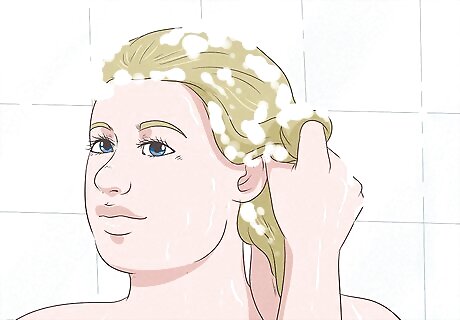
Wash out any products from your hair before getting a trim. Give your hair a good rinse, washing out any gels, pomades, or other products before you get started. Lather your hair with shampoo before rinsing the product out completely, so your hair is nice and clean when you start trimming it. Most hair is better cut while wet. However, if you have thin, fine hair type, let it dry out completely before giving it a trim. If you trim your fine hair while it’s wet, you may cut off too much by mistake.
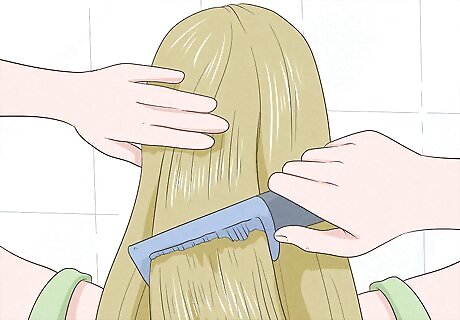
Comb through your hair so it’s easier to work with. Grab a comb and drag your hair backward, guiding it down the back of your head. This makes it a bit easier to trim and style in the long run. If you have shoulder-length or long hair with bangs, trim your bangs before the rest of your hair.
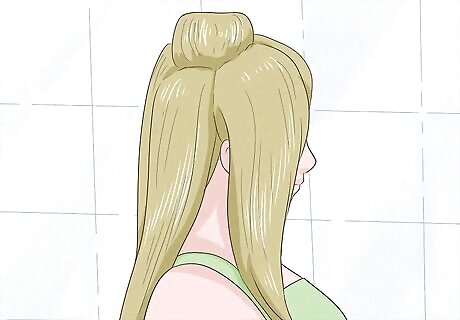
Section off your hair so you can trim small amounts at a time. If you have a short haircut, separate your hair part with a comb so it’s easier to trim and style. If you have long hair, clip up the top layers of your hair, so you can trim your hair in sections. A basic hair clip is great for clipping up longer hair. This is most important for shoulder-length or long hair, curly hair, and natural hair. If you’re working with short hair, you don’t have to worry about this. If your hair is relaxed or straight, divide your hair into 5 parts: 2 sections along the back of your neck, 1 section along the center of your head, and 2 sections framing your face.
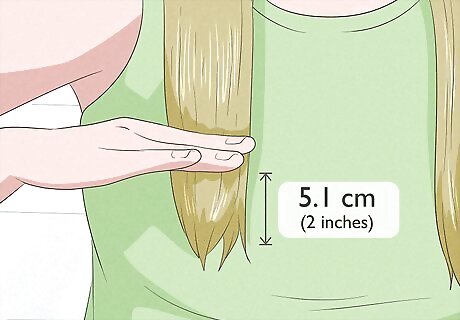
Grab a 2 in (5.1 cm) section of hair with your fingers. Section off a small piece of hair, pinching it with your middle and pointer finger as you go. Do your best to work in small sections, so you don’t accidentally cut off too much hair by mistake. When trimming shorter hair, create a balanced look by trimming the sides instead of the top. If you’re working with natural hair, cut your curls individually instead of dividing your hair into larger sections.
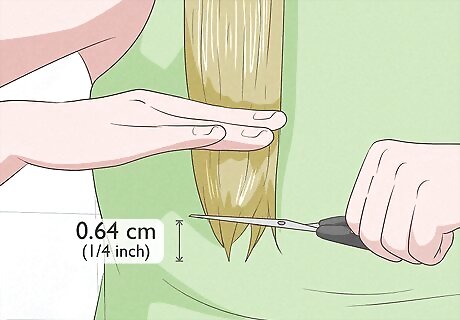
Trim off ⁄8 to ⁄2 in (0.32 to 1.27 cm) in a straight line. Grab a pair of sharp scissors and make your way across the split ends. If your split ends are larger than ⁄8 in (0.32 cm), just trim away as much as you need to keep your hair healthy. Repeat this process with the rest of your hair, trimming away your split ends in small sections. For instance, you might need to trim off ⁄2 in (1.3 cm) or so of hair. For a more feathered look, trim your hair in short, vertical snips instead of cutting in a straight line.
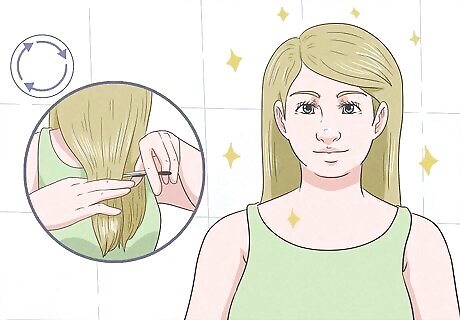
Trim the rest of your hair to match the first piece you cut. Grab another 2 in (5.1 cm) section of hair and line it up with the piece you already cut, then trim off the same amount as you did before. Continue this process with all of your remaining hair so each section is straight and even. If you have short hair, only trim the front and sides of your hair. Don’t worry about the back—it can be difficult to see if you’re cutting your hair at home.
Hair Dusting for Split Ends
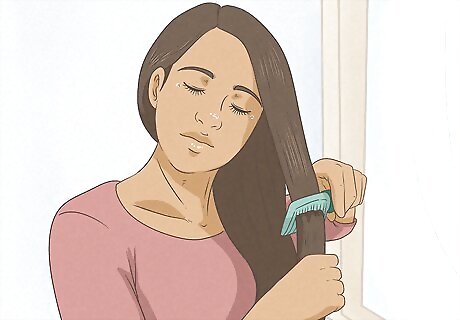
Comb through your hair so it’s nice and smooth. Work the comb through all your hair, no matter how short or long it is at the moment. Get rid of any obvious snares or tangles, so your hair will be easy to work with.
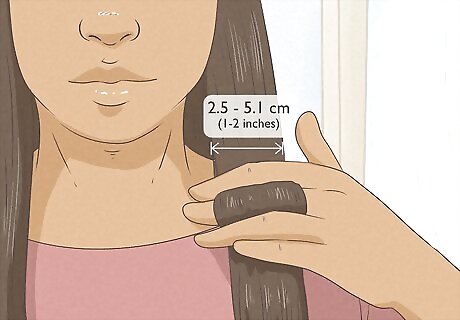
Grab a 1 to 2 in (2.5 to 5.1 cm) section of hair with 3 fingers. Create a “barrette” of sorts with your fingers, with your middle finger resting beneath the section of hair and your pointer and ring fingers resting on top. Focus on the hair covering your middle finger, so you can see your split ends really easily. It helps to do this in front of a mirror.
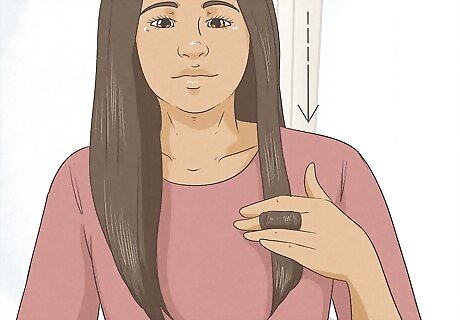
Slide your fingers down the section of hair until you see split ends. Start towards the top of the hair section and glide your fingers down. Look for loose pieces of hair that stick up, instead of blending in with the rest of your hair. These are your split ends, which you want to get rid of. You’ll see more split ends towards the lower half of your hair shaft.
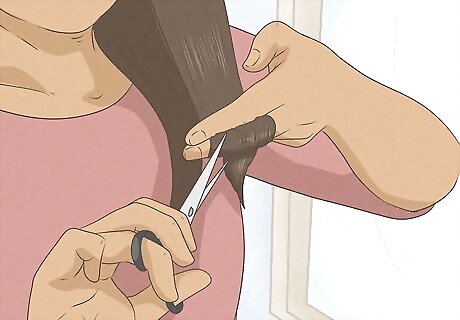
Trim off these split ends with a pair of styling scissors. Grab a pair of sharp styling scissors and snip off the split ends from the rest of your hair. You don’t need to do any major cutting here—just snip off the 1-2 strands that are visible above the rest of your hair.
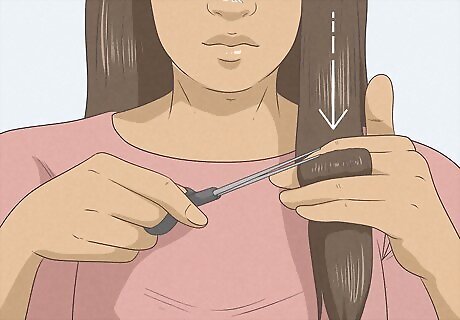
Continue sliding your fingers and trimming any dead ends. Slide your pointer, middle, and ring fingers along the same section of hair, looking for loose strands of hair as you go. Snip off these pesky loose ends with the scissors, continuing to slide and trim until you’ve gone through the entire section of hair. Fun fact: this process is called “dusting” since you aren’t actually cutting very much off from your hair.
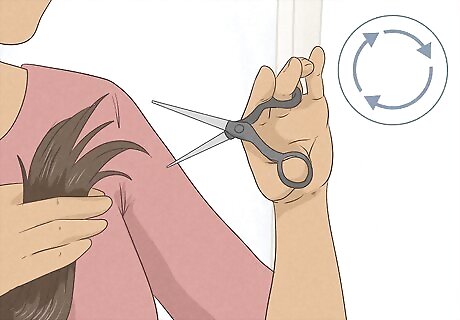
Repeat this process with the rest of your hair. Grab another small, 1 to 2 in (2.5 to 5.1 cm) piece of hair with your fingers. As you’ve done before, slide your pointer, middle, and ring fingers down the section of hair, cutting off any loose, split ends as you go. You may need to ask a friend or relative to trim away the split ends along the back of your head, since they can be a bit tricky to reach on your own.










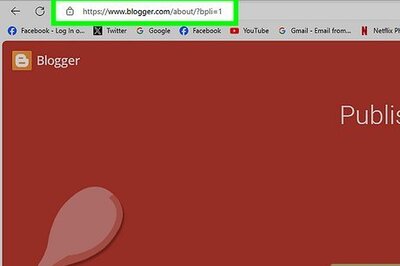




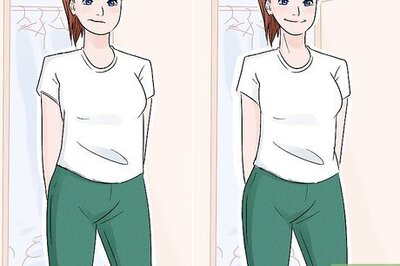
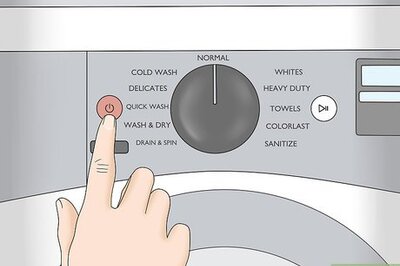
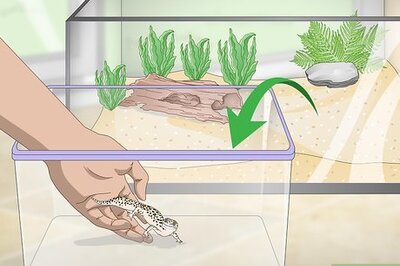
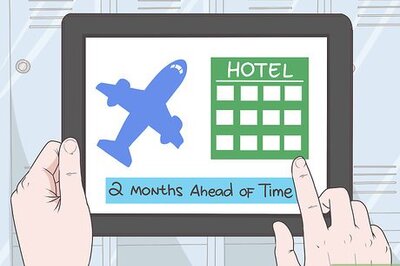

Comments
0 comment